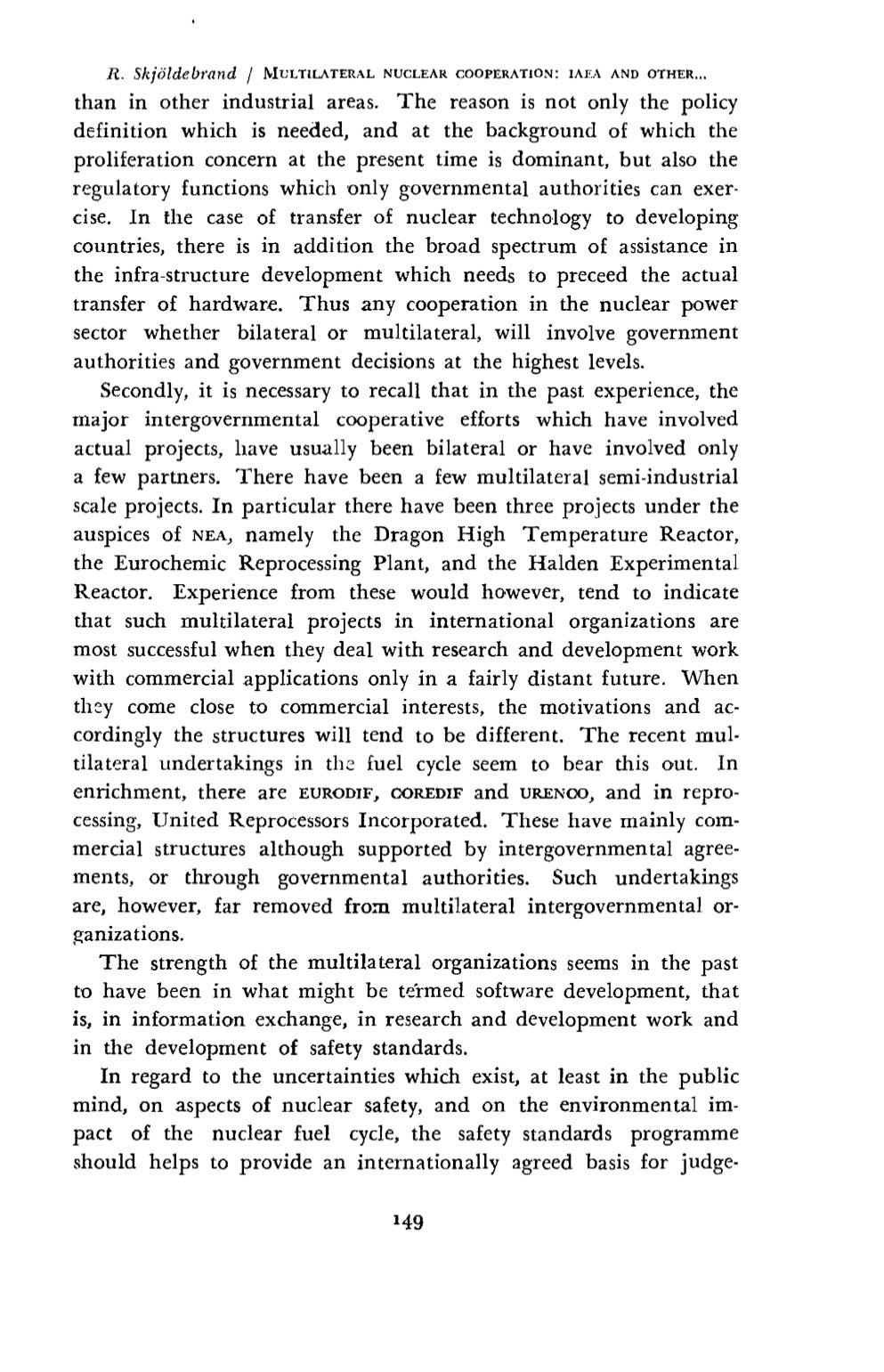
R. Skjoldebrand
I
MULTILATERAL NUCLEAR COOPERATlON: IAEA AND OTHER...
than in other industrial areas. The reason is not only the poliey
definition which is needed, and at the background of whieh the
proliferation concern at the present time is dominant, but also the
regulatory functions which 'Only governmental authorities can exer·
cise. In the case of transfer of nuclear technology to developing
eountries, there is in addi tion the broad spectrum of assistanee in
the infra-structure development which needs to preceed the actual
transfer of hardware. Thus any cooperation in the nuclear power
sector whether bilateral or multilateral, will involve government
authorities and government decisions at the highest levels.
Secondly,
it
is necessary to recall that in the past experience, the
major intergovernmental cooperative eHorts which have involved
actual projects, have usually been bilateral or have involved only
a few partners. There have been a few multilateral semi·industrial
scale projects. In particular there have been three projects under the
auspices of
NEA,
namely the Dragon High Temperature Reactor,
the Eurochemic Reprocessing Plant, and the Halden Experimental
Reactor. Experience from these would however, tend to indicate
that such multilateral projects in international organizations are
most successful when they deal with research and development work
with commercial applications only in a fairly distant {uture. When
they come close t'O commercial interests, the motivations and ac–
cordingly the structures will tend to be different. The recent mul–
tilateral undertakings in th::: fue! cycle seem to bear this out. In
enrichment, there are
EURODIF, COREDIF
and
URENCO,
and in repro–
cessing, UnÍted Reprocessors Incorporated. These have mainly com–
mercial structures although supported by intergovernmental agree–
ments, or through governmental authorities. Such undertakings
are, however, far removed froID multilateral intergovernmental or–
ganizations.
The strength of the multilateral organizations seems in the past
tú have been in what might be térmed software development, that
is, in information exchange, in research and development work and
in the development of safety standards.
In regard to the uncertainties which exist, at least in the public
mind, on aspects of nuclear safety, and on the environmental im–
pact of the nuclear fuel cyele, the safety standards programme
should helps to provide an internationally agreed basis for judge-
149


